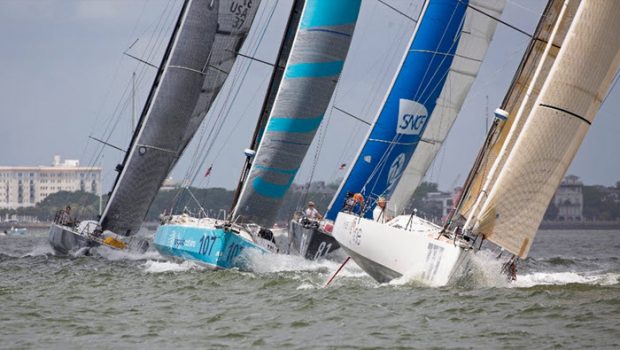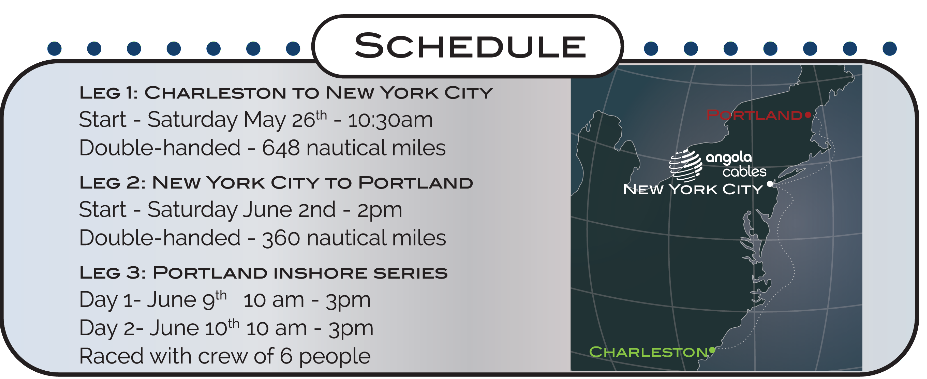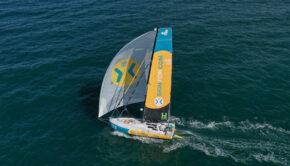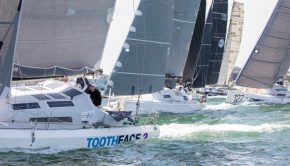First leg begins for 2018 Atlantic Cup
Published on May 26th, 2018
Charleston, SC (May 26, 2018) – Eleven teams representing nine countries started the 2018 Atlantic Cup at 12:00 ET today in sunny skies and a southwest 15 knot breeze from the Charleston Maritime Center.
The start cannon was fired off the Spirit of South Carolina with over 200 spectators looking on. Toothface 2 won the start, which was a beat to the first and only turning mark of the course. From the mark, it turned into a broad reach where Toothface 2 continued their lead. Coming out of the jetties teams bore away, changed into their Code 0s to blast reach towards the Gulf Stream.
The next 12 hours will be very fast, powered up sailing, before skippers decide when to change into their downwind sails to make the run to Cape Hatteras. The major tactical decision is how much easting to put in to get to the Gulf Stream versus turning north and putting up the spinnaker and heading more directly towards Cape Hatteras.
“Given that it’s a 600 plus mile race, the start was hotly contested, with no one was giving anything away on the line,” observed Atlantic Cup Race Director Hugh Piggin. “The number of spectators both on land and on the water was terrific and I’m sure the teams loved the southern hospitality send off from the city of Charleston.”
In the next 12-hours there are three options for the teams. Those closest to the rhumb line led by the oldest boat in the fleet, First Light, are hedging that it’s not worth the distance to go directly to the Gulf Stream given that there’s plenty of wind where they are. There’s a group in the middle that doesn’t want to commit and there’s a group going further east to the gulf stream led by the newest boat in the fleet, Eärendil.
Over the next 24 hours, the wind will stay fairly stable in the mid-teens east of the rhumb line – it’s lighter to the west and continues to get lighter the further to the east teams go. The winds will build south of the fleet and try to move north, but it likely won’t catch up with the teams before they reach Cape Hatteras.
For the teams moving east to the Gulf Stream, they are likely to see currents in excess of three knots in their favor once they get there. The decision on how quickly to enter the Gulf Stream will be made over the next few hours between the two crew members as they asses their position, their speed and analyze the wind forecast.
Details: http://www.atlanticcup.org
Source: The Atlantic Cup













 We’ll keep your information safe.
We’ll keep your information safe.